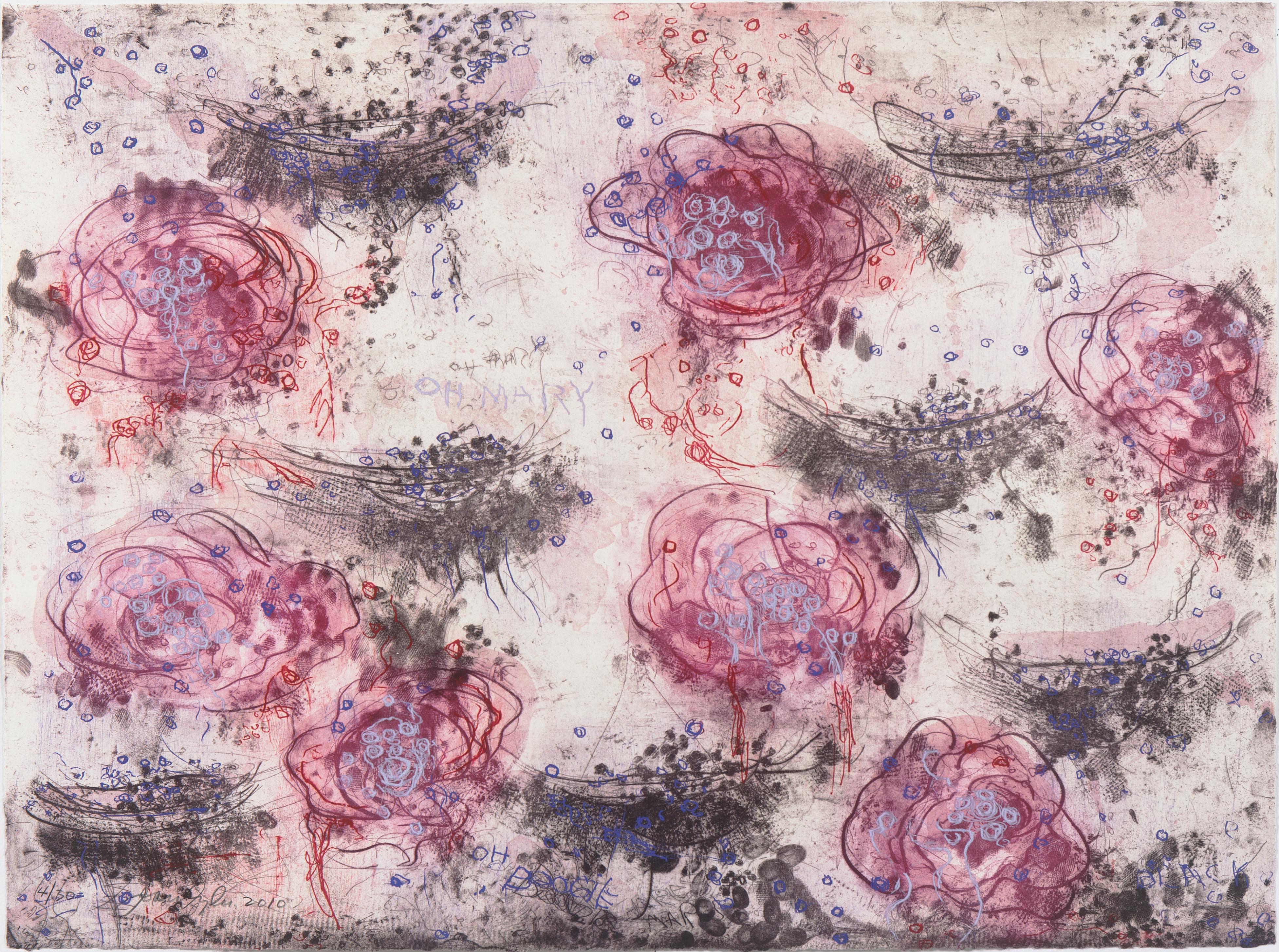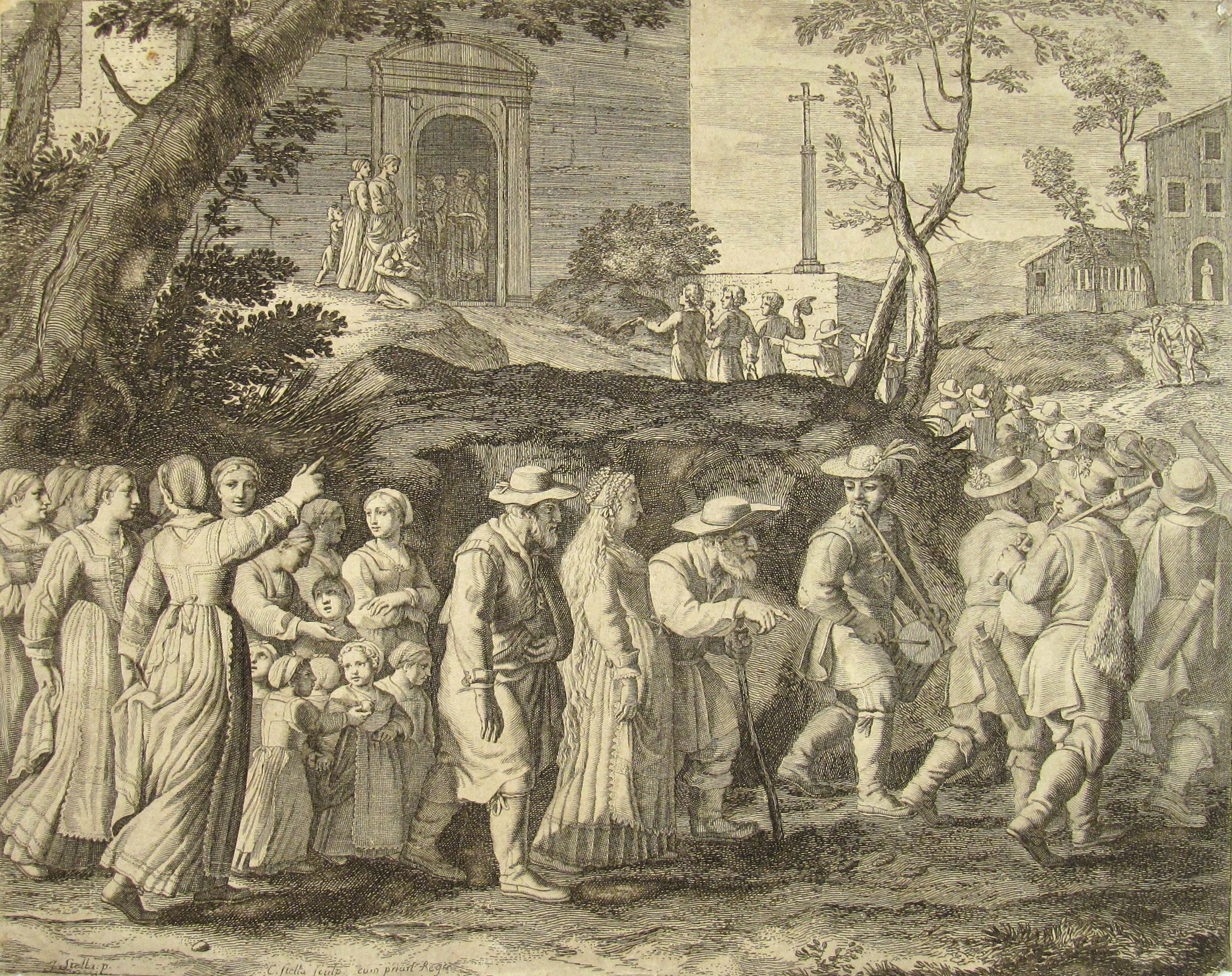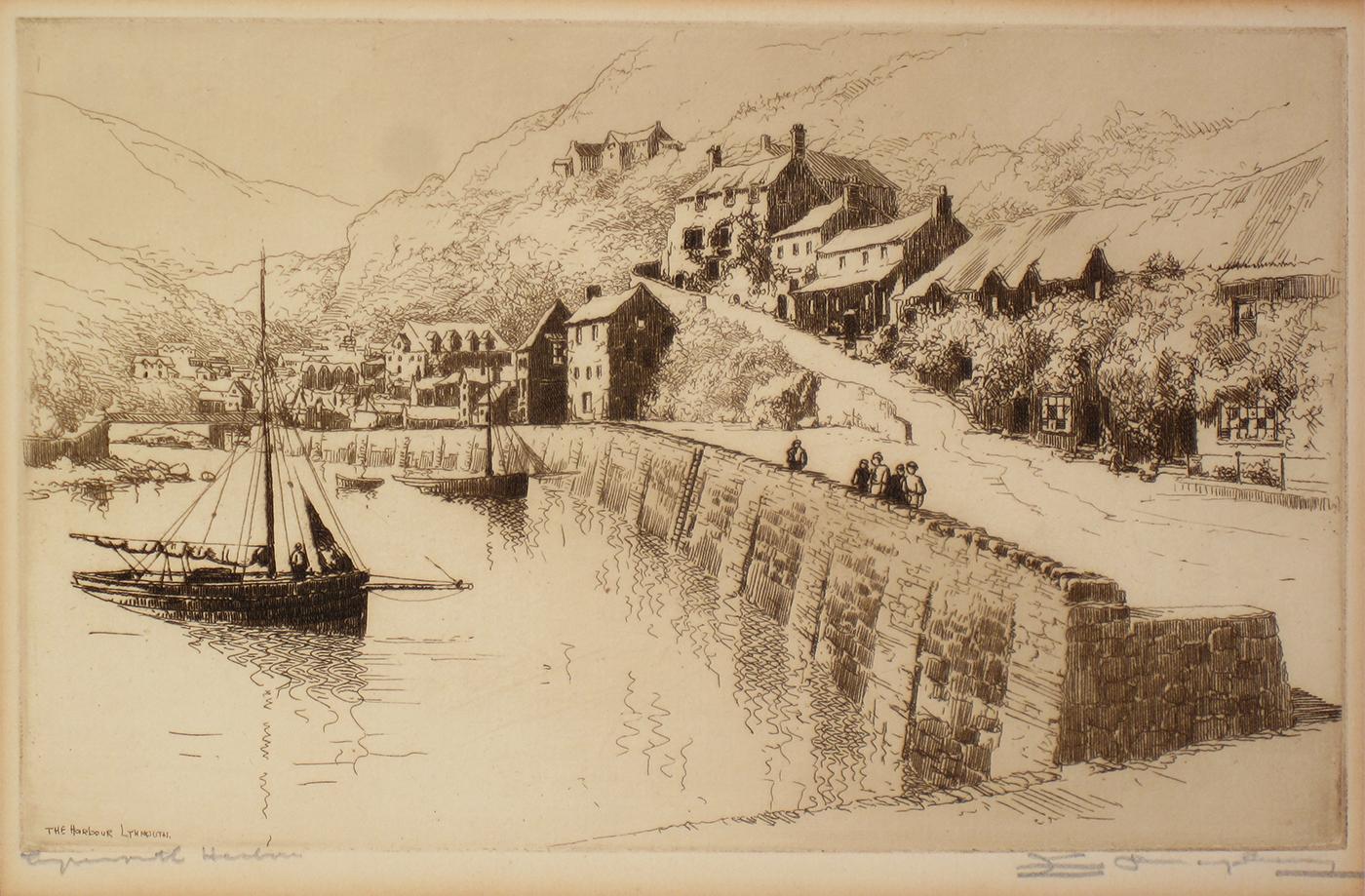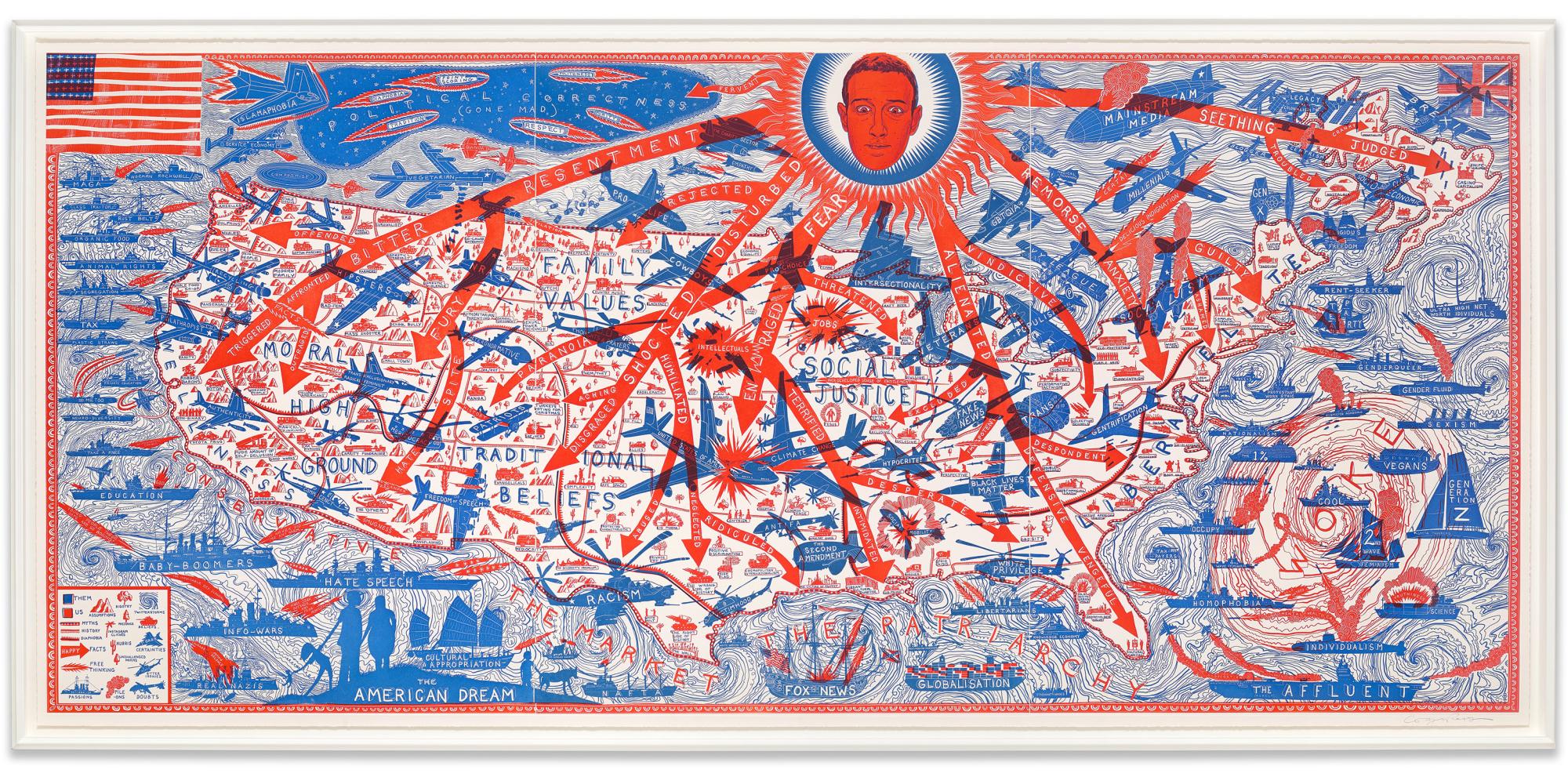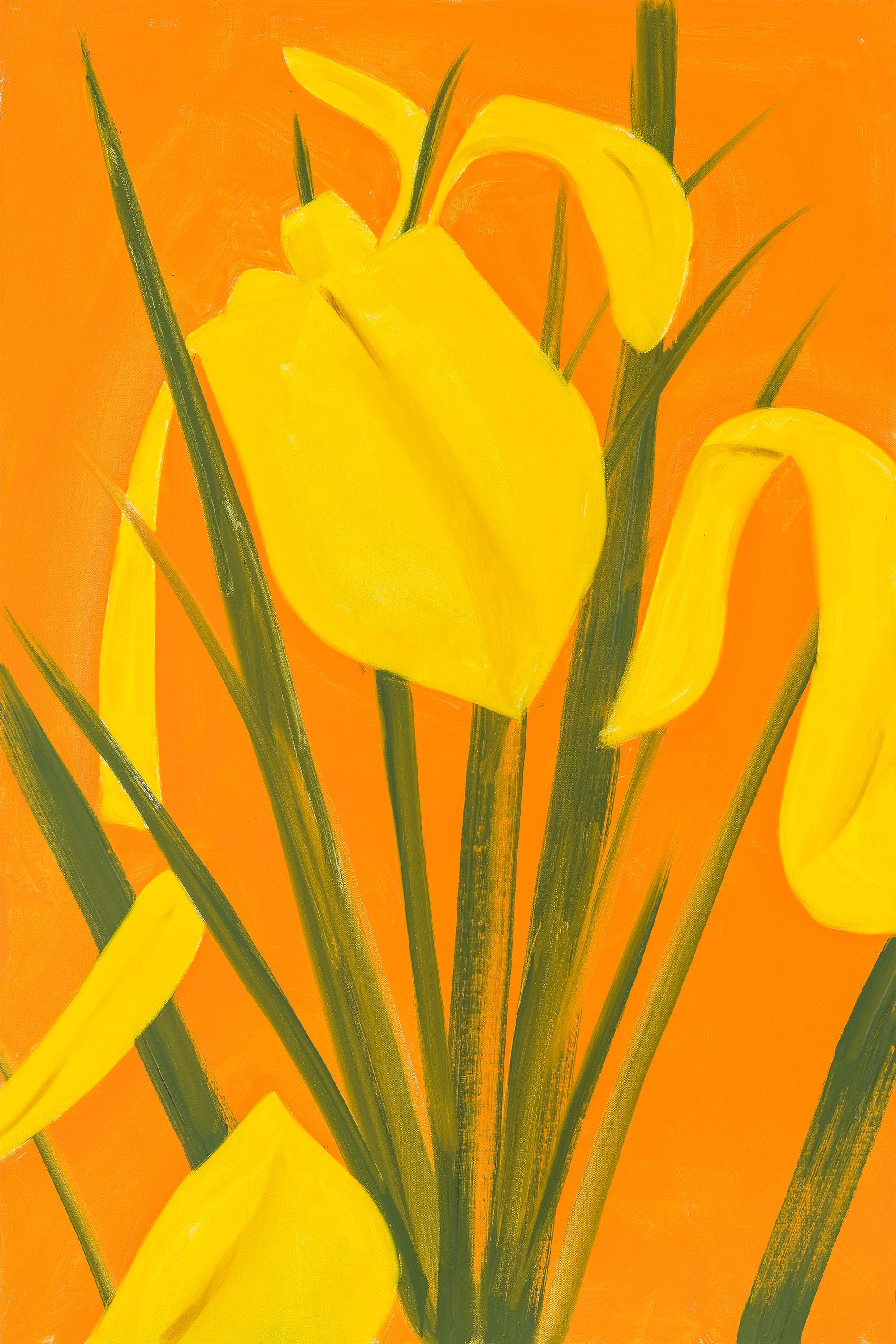Items Similar to Le Ministere De La Marine
Want more images or videos?
Request additional images or videos from the seller
1 of 6
Charles MeryonLe Ministere De La Marine1865
1865
About the Item
Charles Meryon (French, 1821-1868), "Le Ministere De La Marine", Landscape Etching, 7 x 6.38 Interior Matte ( 20.25 x 16.25 In Matted Frame), Mid 19th Century, 1865
Colors: Black and White
A pioneering master of original etching in France, Charles Meryon was a solitary and disturbed genius of great creative power. He was described by the leading figure of the British Etching Revival, Sir Francis Seymour Haden, as "undoubtedly one of the greatest artists on copper that the world has produced" - no etcher could wish for greater praise. Indeed, the most sincere form of flattery, that of imitation, has been displayed of Charles Meryon's etchings more than of almost any other artist excepting Rembrandt.
The illegitimate child of a travelling English physician and a dancer at the opera house, Charles only first assumed the surname of Meryon when he discovered the true circumstances of his birth upon joining the Naval School at Brest in 1837. The revelation of his illegitimacy produced a violent shock for the strangely impressionable young man, which cast over his life an ineffaceable tinge of melancholy and timidity.
Whilst serving with the Navy, Charles Meryon sailed as far afield as Australasia and the South Seas, and he recorded his voyages in many sketches, aspects of which are included in his etchings of later years. It was during his time in the Navy that his nervous sensitivity appears to have developed, for Charles Meryon was morbidly conscious of the slightest slur and became increasingly suspicious of his friends - whilst away on Naval business his mother died of mental illness. Upon his return to France at the age of 25, with only a small inheritance, Charles Meryon resigned his naval post and determined to become a professional artist. Based in Paris he began painting lessons, however he suffered from Daltonism, a form of colour blindness in which one colour is mistaken for another and by 1850 his career as a painter had already effectively ended. It was as a graphic artist, and especially as an original etcher, that Charles Meryon was to excel. He studied at the studio of E. Blery, the engraver, copying portraits and engravings, but it was one master in particular, Renier Zeeman, who was to seize his imagination and transform him into an etcher.
Rapidly Charles Meryon developed a brilliant dextrous ability with the etching needle and by 1849 he conceived the idea of a series of etchings devoted to the city he loved. He dedicated these works to his revered idol Zeeman and between the years 1851 and 1854 appeared the Eaux-fortes sur Paris, the series of works upon which the bulk of his fame now rests. Little known and unappreciated by the general public during his lifetime, these twenty or so plates placed Charles Meryon amongst the greatest masters of original etching. He based these etchings upon sectional sketches of given buildings - having decided upon his point of view he would sketch day after day at the same time in incredible detail. He would then construct a completed drawing from multiple sketches at home, devising the buildings from the bottom upwards, as he believed that buildings should be begun from the foundations, with the artist following the same method as the builder.
The technical mastery of these brilliant works would be sufficient alone to establish Charles Meryon's position amongst the greatest of all etchers, however, these works possess an extraordinary aura and mysterious atmosphere which is inherent to the work of a mind possessed. Charles Meryon was a peculiar genius of brooding, introspective temperament, whose instinct for design, poetic vision, and conscientious thoroughness were tinged with a strange vision which became increasingly disturbed as the years progressed. Meryon lived a wretched livelihood with little or no means, few friends, and in suspicion of the whole world. Despite the staunch support of Felix Bracquemond and the admiration of such figures as Baudelaire, Gautier, and Victor Hugo, his condition became increasingly deplorable. Charles Meryon became evermore unsociable and mentally unstable. By the Spring of 1858 he worked only intermittently and began instead to dig up his garden to find the dead bodies he believed to be buried there. His condition bordered on delirium and he began to keep to his bed, flourishing a pistol whenever anyone entered. On 12 May 1858 he was removed to the asylum at Charenton St. Maurice, where he was described as suffering from "melancholy madness, complicated by delusion". After fifteen months he was discharged as cured, but remained never far from madness.
During the following years his etchings began gradually to increase in popularity. Charles Meryon was known well by the amateur etcher and great patron of the arts, the famous Dr. Gachet. Francis Seymour Haden visited him to admire his work and to purchase a set of his Paris etchings, but the disturbed Meryon followed Haden through the streets, seizing back his etchings and accusing Haden of usurping the work of other artists. Charles Meryon's behaviour became erratic in the extreme and after a brief return to the asylum at Charenton in late 1866, he was released to visit the Universal Exhibition of 1867 where several of his etchings were shown - tragically, a violent storm broke out and finally shattered his reason. He did not recover from the relapse, believing himself to be Christ held captive by the Pharisees. He claimed there was not enough food in the world and that he would not wrong the poor by taking their sustenance. He refused to eat and on 14 February 1868, Charles Meryon died of starvation.
As a boy Charles Meryon claimed he had seen crowds of angels and it is clear from his work that his dreaming eye enabled him to see palpable shapes from the phantom past. To Meryon the streets of Paris were haunted places, wet with tears. Their atmosphere was infected with old crimes, miseries, and sins. His strange visions are to be found in certain states of the College Henri IV and Rue de l'Ecole de Medicine, Tourelle de la Tixanderie, Ministere de la Marine (in which troops of aerial horseman are depicted attacking the Ministry), and particularly Presentation de Valere Maxime au Roi Louis XI . Aside from his disturbed historic visions Charles Meryon expressed himself in verses which were designed to be published alongside his images, explaining the reflections which the subjects aroused in his mind. A thoroughly novel artist, who was at the leading edge of the etching revival in France, Charles Meryon created an outstanding body of highly concentrated etched work which is pervaded by an atmosphere unique to a mind of abnormal genius.
- Creator:Charles Meryon (1821-1868, French)
- Creation Year:1865
- Dimensions:Height: 7 in (17.78 cm)Width: 6.38 in (16.21 cm)
- Medium:
- Period:
- Condition:
- Gallery Location:New York, NY
- Reference Number:1stDibs: LU75233077551
About the Seller
4.6
Vetted Seller
These experienced sellers undergo a comprehensive evaluation by our team of in-house experts.
Established in 1984
1stDibs seller since 2017
84 sales on 1stDibs
Typical response time: <1 hour
- ShippingRetrieving quote...Ships From: New York, NY
- Return PolicyThis item cannot be returned.
More From This SellerView All
- View From BridgeBy Jack BilanderLocated in New York, NYJack Bilander (Polish/Amercan 1919-2008) , "View From Bridge" , Abstract Colored Etching/ Aquatint, 19.25 x 10.75, Mid-Late 20th Century, 1958 Colors: Black, White, Red Jack Biland...Category
1950s Abstract Landscape Prints
MaterialsAquatint, Etching
- Village in Southern Italy (Edition 10/30)By Ruth KerkoviusLocated in New York, NYRuth Kerkovius (Latvian/American 1921-1970) "Village in Southern Italy" Edition 10/30, Landscape Etching/Drypoint/Aquatint signed and numbered in Pencil, 16.25 x 24.75, Late 20th Century, 1967 Colors: Black, Brown, Blue, White, Red She was born in Latvia in 1921. She received her early training in Munich, Germany, working in theatre Costume History and Design, and in painting before she came to America. Once in New York she studied at the Art Students League, the School of Visual Arts, the Pratt Graphic Art Center under Frasconi, and then continued at Pratt on a fellowship to work under Michael Ponce de Leon...Category
1960s Abstract Abstract Prints
MaterialsDrypoint, Etching, Aquatint
- Winding StreamBy Nan LindahlLocated in New York, NYNan Lindahl (American) "Winding Stream", Landscape Etching signed and titled in Pencil, 5.50 x 8.25 (10.75 x 12.75 Framed), Early 20th Century Colors: Black on White Nan Lindahl wa...Category
Early 20th Century Impressionist Landscape Prints
MaterialsEtching
- Canterbury Gate CathedralBy Preston CribbLocated in New York, NYPreston Cribb (English, 1876-1937) "Canterbury Gate Cathedral", Etching titled and signed in Pencil, 13.63 x 9.50 Framed (Image: 9.50 x 5.25), Early to Mid 20th Century Colors: Bla...Category
Mid-20th Century Academic Abstract Prints
MaterialsEtching
- Vienna, Austria; Wienn in OsterreichLocated in New York, NYPublished by Probst, Johann Friedrich, 1721-1781 Augsburg. Copper etching print; hand-colored; - condition: Printed on 2 sheets joined together; size (in cm) 38 x 104; Large and very decorative view of Vienna with numbering of the important houses and buildings. The Werner / Probst views are distinguished by the their large size that allows considerable architectural and landscape detail, extending to the delineation of farm buildings, boats and individual trees. Each includes a numbered key identifying important sites and buildings. Friedrich Bernhard Werner was a German printmaker, draftsman and writer of chronicles; Bénézit states he was born in Reichenau, other sources indicate Silesia. As a young man he lived an itinerant and rather bohemian existence as a writer, translator and working in theater. Eventually he settled in Augsburg, where he drew views for the publishing houses of a Martin Engelbrecht...Category
18th Century Landscape Prints
MaterialsEtching
- The ElBy Jack BilanderLocated in New York, NYJack Bilander (Polish/American 1919-2008) , "The El" , Abstract Colored Etching/ Aquatint , 14 x 11, Mid 20th Century, 1952 Colors: Green, White, Black, Grey Jack Bilander was born...Category
1950s Abstract Landscape Prints
MaterialsEtching, Aquatint
You May Also Like
- Wild RosesBy Joan SnyderLocated in Brooklyn, NYWild Roses, 2010 Lithograph/etching/woodcut 28 3/8 × 38 3/8 in 72.1 × 97.5 cm This print combines etching, lithography, and woodcut to create a great variet...Category
2010s Contemporary Landscape Prints
MaterialsEtching, Lithograph, Woodcut
- The Wedding Procession - Le Cortege nuptial - 17thC Etching from Les PastoralesBy Claudine Bouzonnet-StellaLocated in Meinisberg, CHEngraved by Claudine Bouzonnet-Stella (French, 1636-1697) After Jacques Stella (French 1596-1657) The Wedding Procession - Le Cortege nuptial • Copper engraving on laid paper • Sh...Category
17th Century Naturalistic Figurative Prints
MaterialsInk, Laid Paper, Etching
- Danae and Zeus by Deborah BrownBy Deborah BrownLocated in New York, NYDeborah Brown Danae and Zeus, 2021 Two plate sugar lift and aquatint etching printed on Rives BFK white paper Image Size: 16 x 20 inches Paper Size: 22 x 30 inches Edition of 18 ...Category
2010s Contemporary Landscape Prints
MaterialsEtching
- The Harbour Lynmouth. Antique Print 1920sLocated in Sydney, NSWEdgar James Maybery The Harbour Lynmouth Antique Print 1920s Matt size 28cm x 33cm Image Size 14cm x 21 cmCategory
Early 20th Century Realist Landscape Prints
MaterialsEtching
- The American DreamBy Grayson PerryLocated in London, GBEtching on BFK Rives paper. Produced in 2020. Edition of 68. Framed in artist's moulding. Signed and numbered in pencil by Grayson Perry.Category
2010s Contemporary Landscape Prints
MaterialsEtching
- Yellow Flags 4 - 21st Century, Alex Katz Landscape Print, Orang, Yellow, FlowersBy Alex KatzLocated in Köln, DEYellow Flags 4 - 21st Century, Alex Katz Landscape Print, Orange, Yellow, Flowers, "Yellow Flags 4" is one of Alex Katz's famous flower prints. His flowers are the most reduced form...Category
2010s Contemporary Landscape Prints
MaterialsEtching, Aquatint
Recently Viewed
View AllMore Ways To Browse
Marine Antique
Charles Child
Rembrandt Style
Food Plate Art
Antique Bed Other
Antique Day Bed
Day Beds Antique
Antique Day Beds
Day Bed Antique
De Maneer Etchings
Antique French Style Bed Frame
Sets Of Framed English Prints
Charles Boyer
Charles Iv
French Day Bed Used
British Garden Prints
British 19th Century Black And White
Charles Wells Etching
